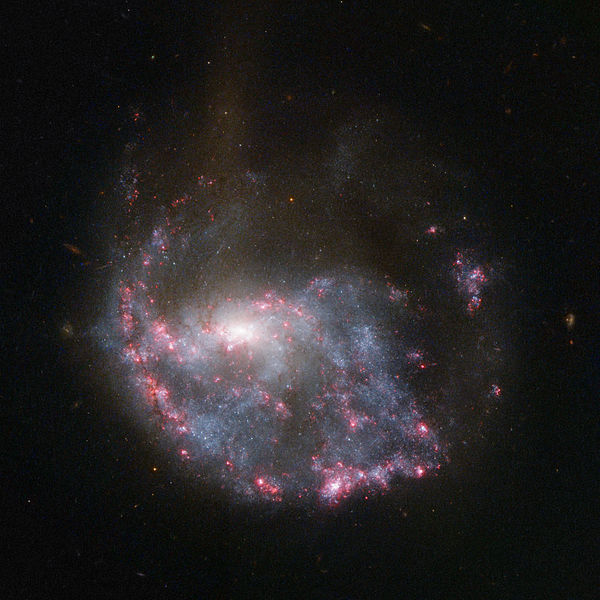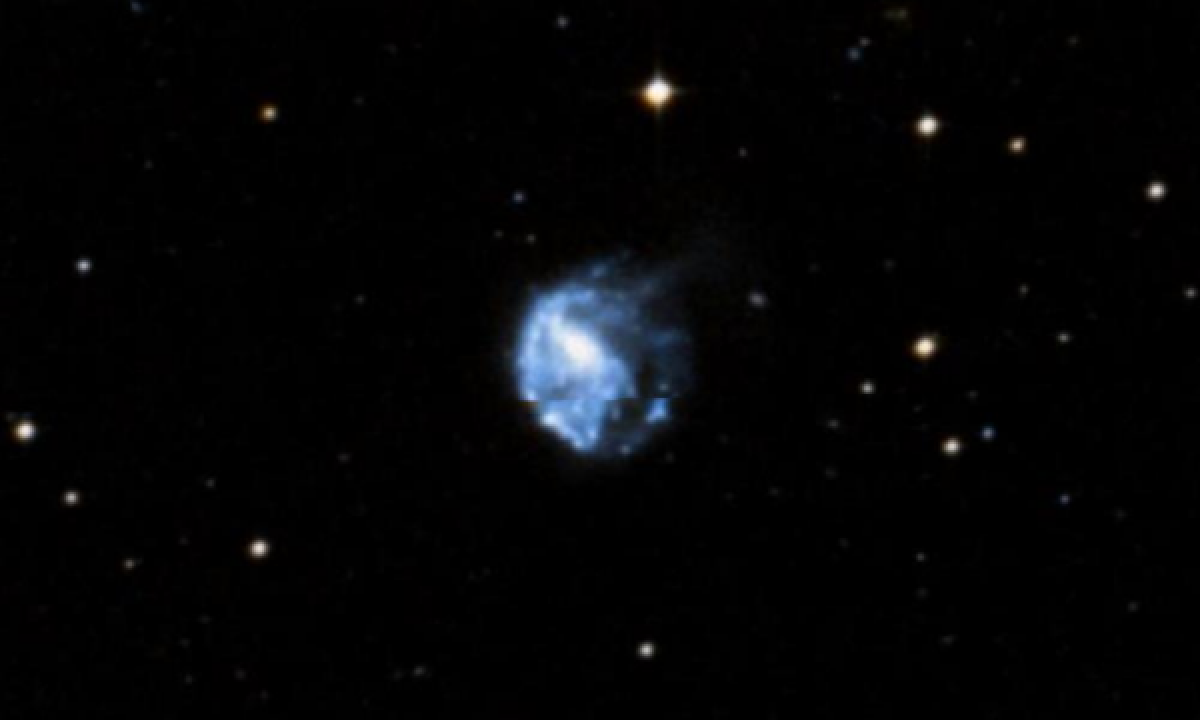The New General Catalogue of Nebulae and Clusters of Stars (abbreviated as NGC) is a catalogue of deep-sky objects compiled by John Louis Emil Dreyer in 1888. The NGC contains 7,840 objects, known as the NGC objects. It is one of the largest comprehensive catalogues, as it includes all types of deep space objects, including galaxies, star clusters, emission nebulae and absorption nebulae.
Know more about NGC
NGC 922

NGC 922 is a peculiar galaxy in the southern constellation of Fornax. Its velocity with respect to the cosmic microwave background is 2879 ± 15 km/s, which corresponds to a Hubble distance of 138.5 ± 9.7 Mly (42.46 ± 2.98 Mpc). Additionally, 17 non-redshift measurements give a distance of 138.88 ± 7.47 Mly (42.582 ± 2.291 Mpc). It was discovered by German-British astronomer William Herschel on 17 November 1784. NGC 922 is one of the nearest known collisional galaxies. This object was described by the Herschels as "considerably faint, pretty large, round, gradually pretty much brighter middle." The general form is described by the morphological classification of SB(s)cd pec, which indicates a peculiar (pec) barred spiral galaxy (SB) with no inner ring system around the bar (s) and loosely-wound spiral arms (cd). This object was originally described as a dust-obscured grand-design galaxy – a term used to indicate a type of spiral galaxy with prominent and well-defined spiral arms. However, observation of its features suggests it has undergone a merger with a gas-rich dwarf galaxy. This has resulted in a distinctive C-shaped ring of H-alpha emission. About 104 kpc away from NGC 922, there is a dwarf galaxy called S2 that was once thought to have been responsible for NGC 922's structure. A stellar plume is seen extending from the galaxy in the direction of S2, located about 8′ away. However, the stellar plume is not connected to S2, and S2 also has it own tidal structure, which would not be possible if it had already "punched" through NGC 922. The main galaxy has a stellar mass estimated 5.47 billion times the mass of the Sun (solar mass), while the dwarf companion has 28.2 million solar masses. The net mass of NGC 922 is estimated as 75 billion solar masses within a radius of 13.4 kpc, with 72% being in the form of dark matter and 20% as neutral hydrogen. It is a starburst galaxy, and the collision has resulted in star formation at the rate of 7–8 M☉·yr−1. New star clusters have been formed in the ring or bar with a mean age of 16 million years, whereas older clusters of 50 million years or more are predominantly found in the nuclear region. The tidal plume pointing toward the companion mainly consists of much older stars, indicating not much new star formation has taken place in that feature.
More Images:

Sources:
Wikipedia Page: NGC 922
NGC 922 at In-The-Sky website
